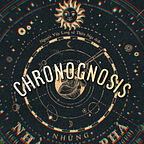Chronobiology- Basics
A VERY short introduction into chronobiology
Chronobiology is a field of biology that examines timing processes, including periodic (cyclic) phenomena in living organisms, such as their adaptation to solar and lunar related rhythms. These cycles are known as biological rhythms (1). Chronobiology comes from the ancient Greek χρόνος (chrónos, meaning “time”), and biology, which pertains to the study, or science, of life. Over the past few decades, chronobiology has developed into a multidisciplinary field of interest in general medicine and psychiatry (2). Research on chronobiology is constantly growing and has contributed to the development of an interdisciplinary field of research.
These chronobiological processes occur in almost all living beings:
- Humans and animals (eating, sleeping, mating, hibernating, migration, cellular regeneration, etc.)
- Plants (leaf movements, photosynthetic reactions)
- Microbial organisms such as fungi and protozoa
- Bacteria, especially among the cyanobacteria (aka blue-green algae)
There are many cycles in nature that are known to humans, but probably, even more, will be discovered in the future. For now, the major cycles that are observed are:
- DAILY (circadian)
- WEEKLY (circaseptan)
- LUNAR (monthly)
- SEASONAL
- YEARLY (circannual)
Along with these cycles/rhythms, there are many more biological cycles; shorter cycles, sub-cycles and body-specific cycles.
Learning how to live in accordance with them can ensure a healthy, happy and peaceful life.
FOOTNOTES
- Patricia J. DeCoursey; Jay C. Dunlap; Jennifer J. Loros (2003). Chronobiology. Sinauer Associates Inc. ISBN 978–0–87893–149–1.
- Chronobiology. Rietveld WJ, Horm Res. 1990; 33(2–4):53–7.
